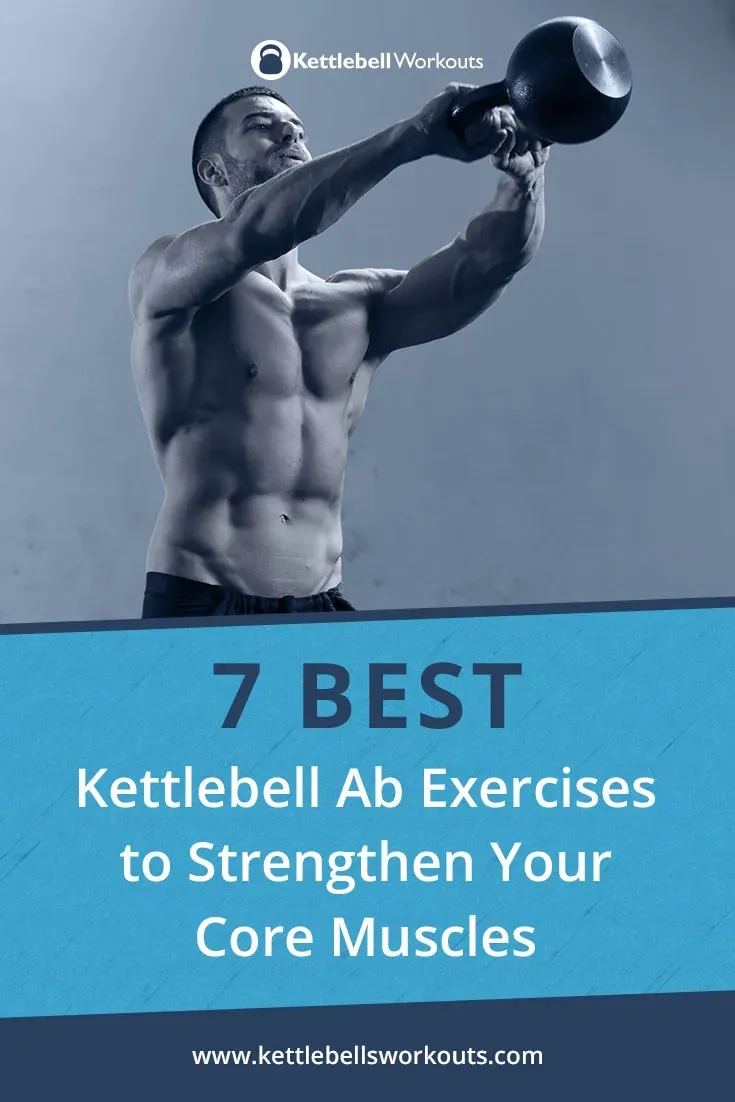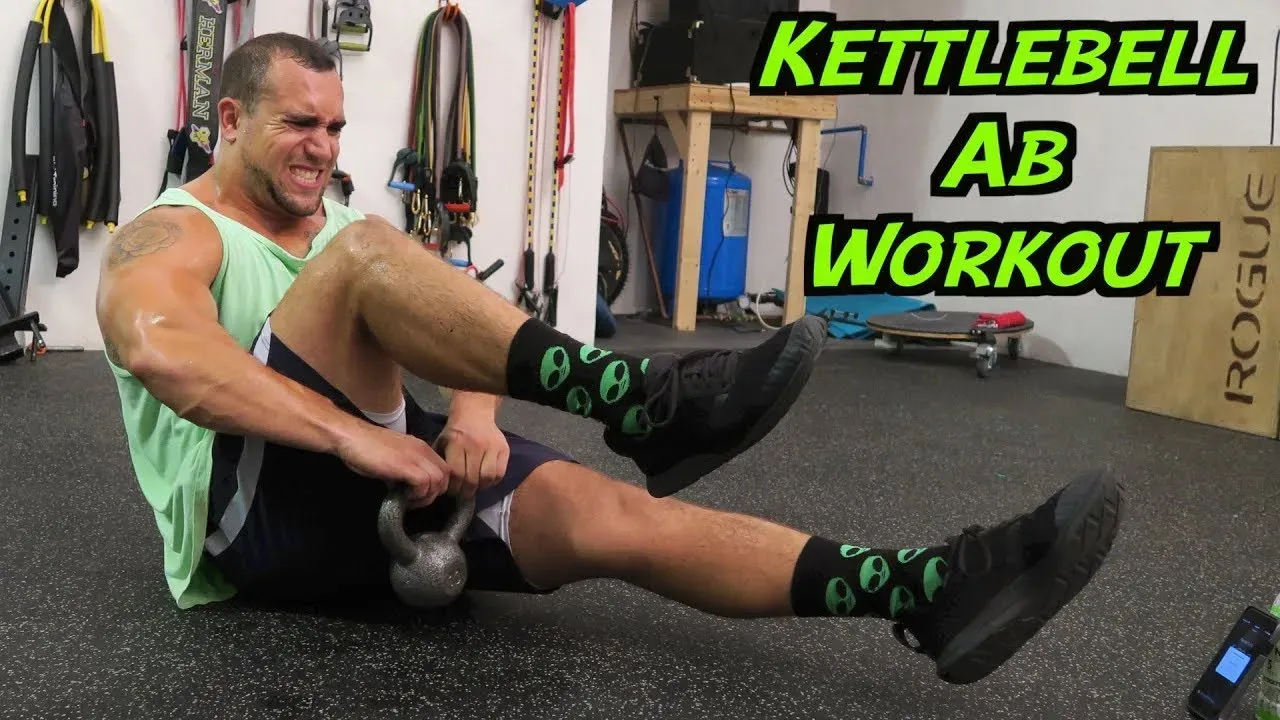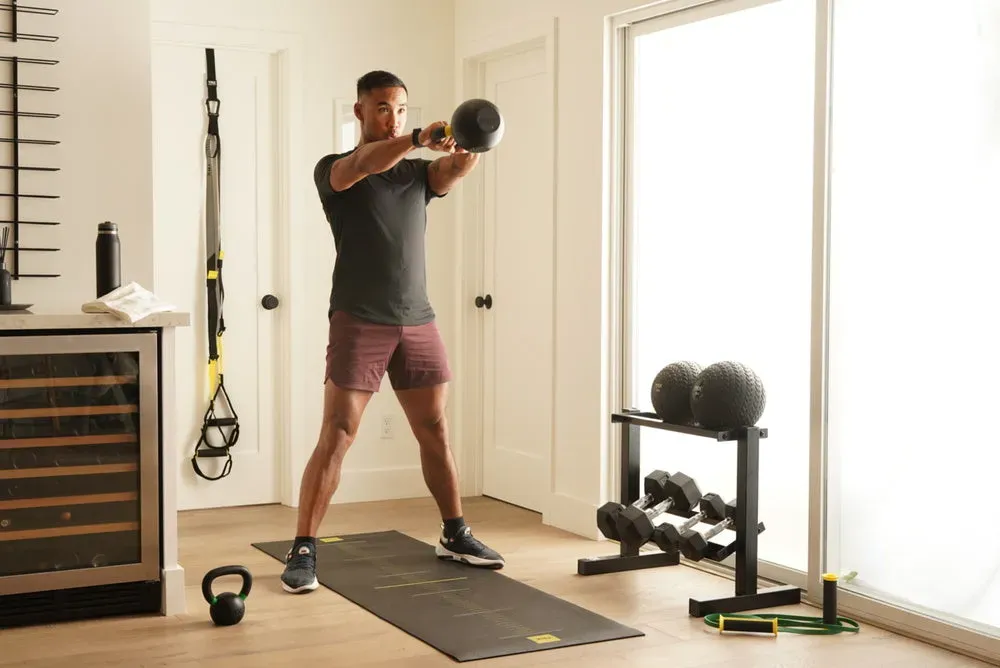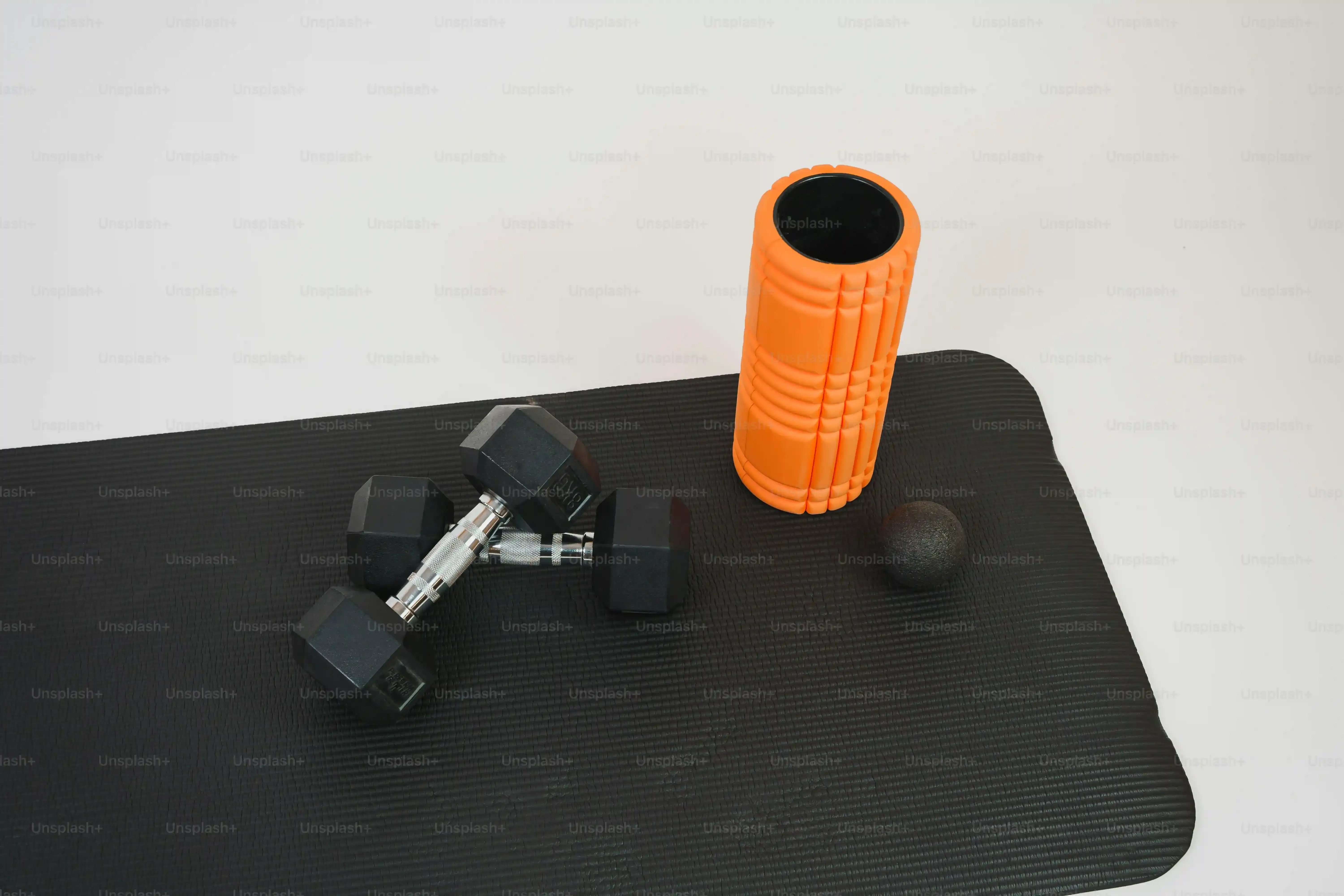Table of Contents
Let's talk about getting a stronger core. Forget endless crunches on a dusty mat or those weird machines at the gym. If you're looking for a truly effective way to build serious abdominal strength, stability, and power, it's time to pick up a kettlebell. Specifically, we're diving into the world of the **ab workout kettlebell**. This isn't just about getting a six-pack, though that might be a nice side effect. It's about building a core that can handle real-world demands, improve your posture, and make you feel more athletic.
Why Bother with an Ab Workout Kettlebell?

Why Bother with an Ab Workout Kettlebell?
More Bang for Your Buck
Look, time is short. Nobody wants to spend an hour doing a thousand crunches that feel like they're doing nothing but hurting your neck. That's **Why Bother with an Ab Workout Kettlebell**? Because it's efficient. A kettlebell forces your core to work overtime just to keep you from falling over during dynamic movements like swings, cleans, or snatches. Even static holds or presses with a kettlebell challenge your stability in a way traditional exercises often miss. You're not just targeting the rectus abdominis (the "six-pack" muscle); you're hitting the obliques, the transverse abdominis, and your entire posterior chain. It's a total package deal.
Real-World Strength, Not Just Show Muscles
Think about lifting groceries, carrying a heavy box, or even just standing up straight all day. Those activities require a core that can stabilize and generate power, not just look pretty in the mirror. An **ab workout kettlebell** session builds that kind of functional strength. When you swing a kettlebell, your core acts as the central hub, transferring force from your lower body to your upper body. This mimics movements you do every single day. It's about building a resilient, capable core that actually helps you *do* things better, not just look good while standing still.
So, what are the practical payoffs of an **ab workout kettlebell** routine?
- Improved posture (less slouching, more standing tall).
- Better balance and stability (less tripping over air).
- Increased power transfer in other lifts and activities (hello, stronger deadlifts and throws).
- Reduced risk of lower back pain (a strong core supports your spine).
- A more athletic and resilient physique.
It Keeps Things Interesting
Let's be honest, doing the same three ab exercises forever gets boring fast. The beauty of using a kettlebell is the sheer variety of movements available. You can do swings, presses, rows, carries, twists, and combinations of all of them. Each exercise challenges your core stability and strength in a slightly different plane of motion. This constant variation not only prevents boredom but also ensures you're building a well-rounded, adaptable core. It’s a far cry from the monotony of standard gym floor fare.
Essential Ab Workout Kettlebell Moves You Need to Know

Essential Ab Workout Kettlebell Moves You Need to Know
The Kettlebell Swing: More Than Just Legs
Alright, let's start with the king of kettlebell exercises: the swing. While often thought of as a hip-hinge movement for your posterior chain, the swing is an absolute powerhouse for your core. As the bell floats at the top, your abs, obliques, and spinal erectors have to fire hard to stabilize your torso and prevent hyperextension. On the way down, your core controls the descent. It's a dynamic anti-extension and anti-flexion exercise all rolled into one explosive package. If you're doing it right – snapping your hips, not squatting – you'll feel your abs working overtime to manage that force. This is foundational for any serious **ab workout kettlebell** routine.
The Turkish Get-Up: A Full-Body Core Challenge
If the swing is the king, the Turkish Get-Up (TGU) is the complex, multi-joint emperor of **ab workout kettlebell** moves. This isn't a quick exercise; it's a slow, controlled dance from lying on the floor to standing up, all while keeping a kettlebell locked out overhead. Every single segment of the movement demands incredible core stability, mobility, and strength. Your abs, obliques, and deep core muscles are constantly engaged to prevent the weight from wobbling and sending you crashing back down. Mastering the TGU improves shoulder stability, hip mobility, and, perhaps most importantly, builds a rock-solid, resilient core that can handle anything.
So, why are the swing and TGU cornerstones of a good **ab workout kettlebell**?
- They work your core in multiple planes of motion.
- They build both dynamic power and static stability.
- They integrate your core with the rest of your body, like it functions in real life.
- They require focus and control, improving body awareness.
Goblet Squats and Carries: Simple but Effective
Don't overlook the simpler **ab workout kettlebell** exercises. Holding a kettlebell in the goblet position (cupped at your chest) while squatting forces your core to stay braced and upright, preventing you from rounding over. Similarly, simply carrying a heavy kettlebell, whether in one hand (suitcase carry) or two (front rack or farmers carry), is an incredible core exercise. Your obliques and deep stabilizers have to work hard to counteract the off-center load and keep your torso stable as you walk. These carries are deceptively challenging and build serious core endurance and anti-lateral flexion strength.
Crafting Your Killer Ab Workout Kettlebell Routine

Crafting Your Killer Ab Workout Kettlebell Routine
Start Smart: Picking Your Ab Workout Kettlebell Arsenal
Alright, so you're sold on the idea of an **ab workout kettlebell**. Now what? You don't need to do every single kettlebell exercise known to humankind in one session. Start simple. Think about the fundamental movement patterns that challenge your core: swings (anti-extension), Turkish Get-Ups (total body stability), and carries (anti-lateral flexion). These three alone can form the backbone of a killer routine. Maybe throw in some goblet squats for anti-flexion while under load. The key is selecting a few movements you can perform correctly and focusing on quality over quantity. Don't try to run before you can walk, or swing before you can hike. Get the basics down solid.
How Often and How Hard? Structuring Your Sessions
Consistency beats intensity any day. For your **ab workout kettlebell** routine, aim for 2-4 sessions per week, depending on your overall training schedule. You can tag these onto the end of a strength workout, or do them as standalone sessions on your off days. The structure can vary: maybe one day is focused on dynamic moves like swings and cleans, while another is more about grinding strength with TGUs and carries. Don't blast your core to oblivion every single day; like any muscle, it needs time to recover and adapt. Listen to your body. If your lower back is screaming during swings, something is probably off with your form, not your core strength.
- Frequency: 2-4 times per week
- Duration: 10-20 minutes per session
- Focus: Mix dynamic (swings, cleans) and static/grind (TGUs, carries) exercises
- Recovery: Allow at least one rest day between intense core sessions
Leveling Up: Progression and Keeping it Fresh
Once you've got a handle on the basic **ab workout kettlebell** movements, how do you keep progressing? The most obvious way is to increase the weight of the kettlebell. But that's not the only trick up your sleeve. You can also increase the number of reps or sets, decrease rest times, or add complexity to the movements. For instance, move from a two-hand swing to a one-hand swing. Try windmills or bent presses for added oblique work. Or combine movements, like a clean and press. The beauty of kettlebells is the endless ways you can challenge your core, preventing plateaus and keeping your routine from getting stale. Stay curious, keep learning, and your core will thank you.
Avoiding Flops: Common Ab Workout Kettlebell Mistakes

Avoiding Flops: Common Ab Workout Kettlebell Mistakes
Swinging with Your Arms, Not Your Hips
let's talk about the kettlebell swing. It looks simple, right? Just hike it back and swing it forward. Easy peasy. Except, it's not. The biggest mistake people make with the swing, and one that completely negates its **ab workout kettlebell** benefits, is turning it into an arm raise. They squat down, lift the bell with their shoulders, and swing it using upper body strength. This puts a ton of strain on your shoulders and lower back and does precisely nothing for your core. The swing is a hip hinge. You hike the bell like you're snapping a towel, load your hamstrings and glutes, and then *explode* your hips forward. Your arms are just ropes guiding the bell. Your core's job is to brace hard at the top, preventing your back from arching as the bell floats. If you're feeling it more in your shoulders or lower back than your glutes and abs, you're doing it wrong. Get a coach, watch good tutorials, and drill that hip hinge.
Ignoring Bracing and Breathing
Another classic fail with **ab workout kettlebell** exercises, especially the heavier, grind-style moves like TGUs, presses, or carries, is neglecting proper bracing and breathing. You can't have a strong core if you're floppy or holding your breath at the wrong time. Before you lift the weight, take a deep breath into your belly, filling your entire torso with air. Then, brace your abs like you're about to get punched. This creates intra-abdominal pressure, stabilizing your spine and making your core a rigid unit. During dynamic movements like swings, you'll use a power breath – a sharp exhale at the top of the swing as you brace. For grind movements, maintain that brace and breathe behind the shield of your abs. Letting your core relax mid-movement, especially under load, is an express ticket to tweaking something.
Common Kettlebell Ab Workout Mistakes to Watch Out For:
- Rounding your back during swings or cleans.
- Squatting instead of hip hinging in the swing.
- Letting the kettlebell pull you forward or sideways during carries.
- Rushing the Turkish Get-Up; losing control of the bell overhead.
- Failing to brace your core before initiating a lift or movement.
- Picking a weight that's too heavy before mastering form.
Taking Your Ab Workout Kettlebell Game to the Next Level

Taking Your Ab Workout Kettlebell Game to the Next Level
Upping the Ante: Heavier Bells and Harder Variations
So you've got the basics down. Your swings are powerful, your TGUs are smooth, and carries feel solid. What's next for your **ab workout kettlebell** routine? The most straightforward path is often just grabbing a heavier bell. It sounds simple, but a few extra pounds on that cast iron ball dramatically increases the demand on your core stabilizers, especially during dynamic movements. Beyond just weight, start exploring harder variations. Think single-arm swings instead of two-hand, double kettlebell carries, or Turkish Get-Ups with a press at the top. These force your core to fight rotational forces and asymmetry in new ways, exposing any weak links you might have ignored with lighter weights or simpler movements. It's about making the movement *less* forgiving.
Flow State: Linking Movements for Core Fire
Another way to advance your **ab workout kettlebell** practice is by linking exercises together into flows or complexes. This isn't just doing a bunch of exercises back-to-back; it's about transitioning smoothly from one movement to the next without putting the bell down. Imagine going from a clean to a press, then into a racked squat, and finishing with a carry. Each transition requires intense core control and stability. Your abs and obliques are constantly working to stabilize your torso as the weight shifts and your body moves through different planes. Building a short, efficient kettlebell complex can be an incredibly potent **ab workout kettlebell** session all on its own, demanding not just strength but also coordination and endurance from your midsection.
Consider incorporating these elements into your advanced **ab workout kettlebell** sessions:
- Double Kettlebell Swings
- Single-Arm Cleans and Presses
- Windmills (requires significant oblique strength and mobility)
- Bent Presses
- Bottoms-Up Presses (extreme core and shoulder stability)
- Kettlebell Complexes (linking 3-5 exercises)
- Waiter Carries (overhead single-arm carry)
Beyond the Standard: Unconventional Ab Workout Kettlebell Drills
If you're really looking to push the envelope with your **ab workout kettlebell**, start exploring some of the less common, more advanced drills. Think about exercises that intentionally create instability or challenge your core in awkward positions – because that's often where real-world core strength is tested. Renegade rows, for instance, done properly with minimal hip sway, are brutal on anti-rotation. Kettlebell bottoms-up presses aren't just a shoulder exercise; keeping that bell inverted requires insane grip strength and core tension to prevent it from wobbling and crashing down. These aren't for beginners, obviously, but they represent the kind of challenging, nuanced work that takes your **ab workout kettlebell** mastery from good to genuinely formidable. It’s about finding ways to make your core work harder, smarter, and in more unpredictable ways.
Swinging Towards a Stronger Core
So there you have it. Ditching the traditional crunch for an ab workout kettlebell routine offers a path to a core that's not just visually appealing, but genuinely strong and functional. We've covered the 'why,' the 'how,' and the pitfalls to sidestep. It takes practice, sure, and maybe a little trial and error to find the right weight and movements for your level. But the payoff – improved stability, increased power in other lifts, and a midsection built for more than just sitting at a desk – is substantial. Pick up that kettlebell, respect the weight, and start building a core that actually works for you.